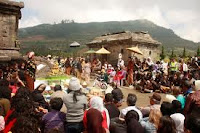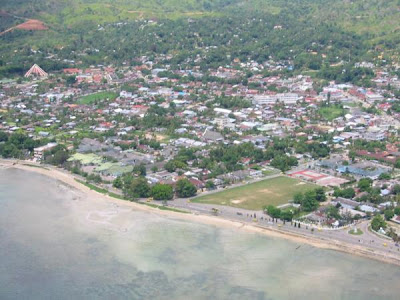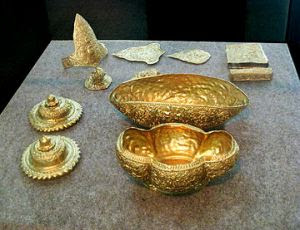Home » Posts filed under Heritage
Dieng Culture Festival is cultural event or some sort of party people are usually held Dieng Plateau people each year.

Dieng Plateau is a tourist area in the center of the Banjarnegara district and Wonosobo regency, Central Java Province. This region altitude 2088 meters above sea level. No wonder, the temperature was quite cold, which is about 10°-20° C. Even in the dry season, this area can reach 0° C in the morning.
Dieng mountains is one of the resorts that suitable alternative for those of you who want to fill a long weekend. Attractive scenery, natural and Sightseeing Cultural heritage of diverse and varied, and interesting local culture.
It results in the Dieng tourist area is not only a wonderful place to visit but at the same time can enrich your knowledge about the culture and history.
Talk about cultural tourism, every year has always held a cultural event, Dieng Culture Festival which is very dear to you miss. Dieng Culture Festival is the annual Cultural Festival activities are held at the Dieng Plateau Tourism Area.
The event was celebrated by a series of art performances presented by local artists such as Lengger dance or Mask dance, Tek-tek (blend than bamboo musical instrument played with a certain rhythm to the song-usually some traditional songs), Rampak Yagsa dance and others.
Dieng is one of the main cultural attraction is Ruwatan Ritual the dreadlocked kids who are often found here.
Dieng is more famous for their stunning natural attractions, like the Dieng Temple, Color Lake, Canderadimuka Crater. But this culture not least interesting in Dieng. In Dieng area, famous for its culture of cutting hair or dreadlocks called Ruwatan ritual. No wonder, if in Dieng are doing this ritual, many visitors come from domestic and abroad.
Indeed, children - native son Dieng has its own uniqueness. Since born, their hair was matted. Even according to traditional community leaders Dieng, believed the dreadlocked kids this is a single child entrusted Kyai Kolodete (figure believed to open the Dieng plateau region).
Based on the trust of local people, dreadlocks can bring bad luck. Therefore, the dreadlocks to be cut. However, the shave is not easy. Must go through a ritual called Ruwatan ritual. That said, if the shaving of dreadlocks conducted without due process ruwatan ritual, then the dreadlocks will grow back, but if through the process ruwatan, dreadlocks will not grow again until the child is growing up. Ruwatan comes from the word "ruwat" which means to throw away. So it is expected after ruwatan, bad luck that brought the child is missing and turn bring the provision.
This ritual should be carried out as requested by the child. So that the parents do not force the child to shave his dreadlocks before the child's wishes. Besides ritual held in accordance with the funding ability than the parents. Because funding for ruwatan is not small. This is because, in a ritual ruwatan, children are usually put forward a request. The request should satisfied by her parents, if not will bring disaster.











